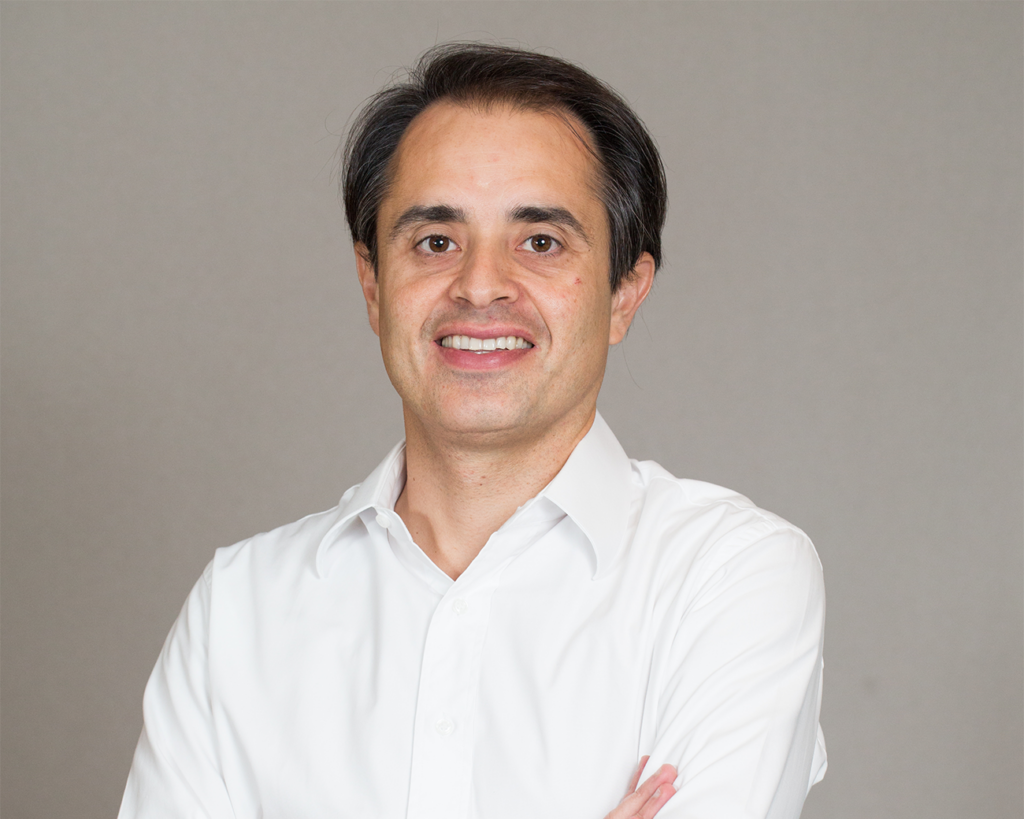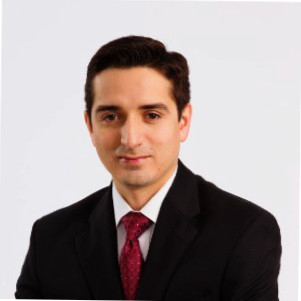LP Profiles, Member Profiles
David Punda, Director of Private Equity Investments, NLI
29 January 2014

LAVCA contacted David Punda, Director of Private Equity Investments at Japanese life insurance company Nippon Life, to get his perspective on Latin America private equity markets and to hear about their plans to actively invest in the region.
LAVCA: Please give some background on Nippon Life Insurance Group. What is your exposure in terms of geography, sector, and stage? What percentage of your portfolio do you allocate to emerging markets private equity?
Punda: Nippon Life is the leading Japanese life insurance company with total assets of over US$500b. We have a long history of investing in the private equity asset class dating back to the mid-1970’s. Today, our allocation to private equity investments is still a small percentage of our overall asset size but it is a growing asset class for us. Within private equity, our current exposure to emerging markets is about 10% of the overall portfolio. Our core strategy is buyout, which represents about two-thirds of the portfolio, and the remainder is split among other strategies such as venture, distressed and mezzanine. Overall, the portfolio is diversified by sector.
LAVCA: How do NLI’s Japanese roots affect your outlook on global PE opportunities and emerging markets in particular?
Punda: Generally, Japanese investors tend to be conservative and have a relatively lower appetite for risk. For the Nippon Life private equity portfolio, this means that the vast majority of exposure (about 90%) has been committed to developed markets, mainly the U.S. and Western Europe. All of the emerging market exposure that we currently have in private equity is in Asia where we historically felt most comfortable investing given the proximity to Japan. However, we have been taking a serious look at private equity in Latin America for the past year, and we hope to become active in the region.
LAVCA: You have spent the last 12-18 months observing the Latin America PE markets and managers. What has been your impression thus far?
Punda: Although many Latin American countries share a common language and similar cultures, the specific characteristics of each country within the region can vary widely. Therefore, we feel that it is important to find an investment partner that truly has a local presence in the countries in which it invests. Having said that, there are some common investment themes in private equity across the region that we find attractive. Examples include an expanding middle class, which has created significant opportunities in retail/consumer, education, healthcare, security and financial services; infrastructure bottlenecks due to a lack of infrastructure investment in the region historically, creating opportunity in logistics and business services; and industries that are highly fragmented which GPs can consolidate.
Another impression of the region is that global investor sentiment towards Latin American countries can change quickly and dramatically. A good example is Brazil in 2013 – at the beginning of the year, valuations were very expensive and many considered the country to be “over-heated”. Throughout the year there were some negative headlines that came out such as disappointing overall GDP growth, street protests calling for governmental change and uncertainty around the 2014 presidential elections. And by the end of 2013, the sentiment towards Brazil changed dramatically and the private equity market became less competitive causing valuations to drop. As a result, GPs in Brazil now tell us that their pipelines are quite robust with deals at reasonable valuations.
LAVCA: How does NLI view the opportunity in Latin America against other emerging markets? Has the region become more attractive in recent years? Why or why not?
Punda: We currently find the opportunity in Latin America private equity to be quite attractive. The region is under-penetrated in terms of private equity compared to other emerging market regions. Latin America represents about a quarter of total GDP in all emerging markets, but the region has only received about 10% of private equity capital flows to emerging markets over the last decade, which implies relatively less competition in private equity overall. Despite the region being under-penetrated, we feel that there are many well established, institutional quality GPs focused on Latin America that are comparable to GPs in the US. We also believe that government/political risk is generally lower in certain Latin American countries “at play” in private equity (i.e. Brazil, Colombia, Chile and Peru) versus other emerging markets such as China (where the government shut down the IPO market during 2013), Russia and India.
LAVCA: What is your typical commitment size? What is your take on fund size in Latin America – do you seek out mid-market sized funds, or billion plus funds?
Punda: Our current commitment size range is from US$20-40m depending on a variety of factors. In terms of fund size, for us the question really becomes (a) do we like pan-regional funds or country-specific funds and (b) do we like large-cap or middle market strategies in Latin America?
Our long-term goal for the region is to eventually become diversified by country, whether through pan-regional funds, various country-focused funds or most likely a combination of both. In terms of making a first allocation to the region, we feel that it would make sense to invest in a pan-regional strategy or a Brazil-focused strategy. We feel that Brazil is a large enough market that would warrant a stand-alone allocation in our portfolio as a first-time entry investment in the region. Making our initial Latin American investment in a Mexico-only or Colombia-only strategy, for example, would be more difficult for us, but we feel that these strategies would complement a more diverse portfolio of Latin American fund investments.
In terms of market cap, we have a bias for the middle market, but also recognize the challenges as an LP in doing due diligence on middle market strategies. There are many more middle market companies in the region, which are generally less expensive and with less capital chasing them. These companies offer more room for operational improvement and professionalization and may have the potential to grow faster. However, the large-cap Latin American GPs tend to be more established and institutionalized and have longer track records than the middle market GPs. When considering a middle market GP, for us it is important to diligence their establishment and operations. When considering a large cap GP it is important for us to ensure that they are differentiated and invest in unique deals where they have a particular edge versus simply paying high entry multiples in auctioned deals. Eventually, just like by country, we would also like to be diversified by market cap in the region.
LAVCA: Are there any specific markets or sectors that you are excited about in 2014? Why?
Punda: Generally, we are excited about strategies that are not linked to the large-cap US buyout market, which remains quite challenging due to the continued availability of cheap financing and expensive valuations. Currently, Latin America is high on our priority list, and other strategies that we plan to consider in 2014 include middle market buyout, growth and distressed.
LAVCA: How do you go about finding and selecting fund managers in Latin America? What key characteristics do you look for?
Punda: We began taking a serious look at the Latin America private equity market over the course of last year, during which time we mapped out the landscape of GPs in the region. We spent a lot of time meeting with GPs and other market participants during our visits to Brazil, Colombia and Mexico and also spent much time talking to LPs who have already been investing in the region to get their insights. Our landscape of the region is largely complete and we can now narrow down which strategies and GPs would be the best fit for our portfolio.
Key characteristics that we look for specifically in Latin American GPs include having a true local presence, emphasis on macro analysis and a promising unrealized portfolio. As mentioned before, we believe that having a strong local presence and network is paramount in Latin America so we spend much time performing reference checks on GPs with local market participants. Latin American markets are generally more volatile than in the US and macro considerations can cause large swings in asset prices – it is important that the GPs seriously consider macro factors as part of their strategy in addition to bottom-up analysis. Finally, there have been a limited amount of private equity exits in Latin America and track records are also generally limited. We therefore feel that it’s crucial for an LP to spend a significant amount of time analyzing a GP’s unrealized portfolio, including visiting some of the portfolio companies.
LAVCA: What advice would you give to managers looking to work with NLI?
Punda: Nippon Life is a long-term investor, and when we make a first-time commitment to a new GP we expect to begin a long-lasting partnership. As a result, we have a rigorous, in-depth due diligence process and we would ask the manager looking to work with us to accommodate our requests as best they can. We will also want to visit with some of the existing portfolio companies and we would ask the manager to facilitate that. Furthermore, we would advise the manager to be as transparent as possible, particularly for any negative news – please tell us as early as possible and we can try to find a way to work through the issue. We would also stress the importance of avoiding conflicts of interest such as crossover investments between funds.
LAVCA: In your opinion, what are the 2-3 biggest challenges for international LPs looking to invest in the region?
Currency risk: although we believe that the risk of a major currency devaluation in the countries “at play” in private equity is very low, the risk of currency depreciation eating into the gains on a portfolio is very real. Hedging is very expensive and not really practical. We therefore feel that it is important for a GP to take currency into account as part of its investment process and portfolio construction.
Exit markets: compared to developed markets, the history of private equity exits in Latin American is short and limited, and the IPO markets have recently been challenging.
Due diligence: it is difficult to diligence GPs with short track records and it is also difficult to diligence other risks relevant to the region such as corruption and political risk.
LAVCA: What advice have you received from other international LPs that currently invest in Latin American PE?
Punda: A point that several LPs brought up is the importance of a strong local presence. This is paramount in Latin America given the nature of the private equity industry there. Many of the companies that GPs target are family-owned, and the owners are often times not familiar with private equity and usually do not want to relinquish control of the business. GPs need to have a strong local network to source these types of investments, and they also need to convince the families to sell, which requires trust and a strong reputation. Furthermore, top talent in management is generally scarce in Latin America and retention is challenging, so having a strong local network of managers is also important. Therefore, LPs should spend much time reference checking a GPs local network and reputation.
Another piece of advice we received from LPs was related to fundraising. Many of the top performing and most reputable GPs in Latin America have been significantly oversubscribed in the past. In order to secure an allocation, it is important for LPs to begin to develop relationships with GPs early on, in between funds and not just when they begin marketing the next fund.
You may be interested in...
-

Luciana Antonini Ribeiro, eB Capital
Executive: Luciana Antonini Ribeiro, Co-Founder and CIO Member Name: eB Capital Year...
-

Cristiano Gioia Lauretti, Kinea Private Equity
Member: Kinea Executive: Cristiano Gioia Lauretti, Head of Private Equity HQ: São...
-

Maria Pia Iannariello, MGM Innova Capital
LAVCA recently spoke with Maria Pia Iannariello, Co-Founder & COO of MGM Innova Capital,...
-

Rafael Ramirez, Portfolio Manager, Alaska Permanent Fund Corporation
LAVCA recently spoke with Rafael Ramirez, Portfolio Manager– Private Equity &...
